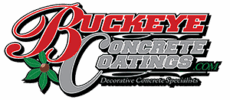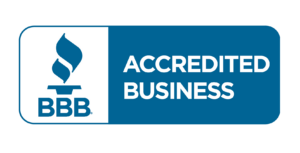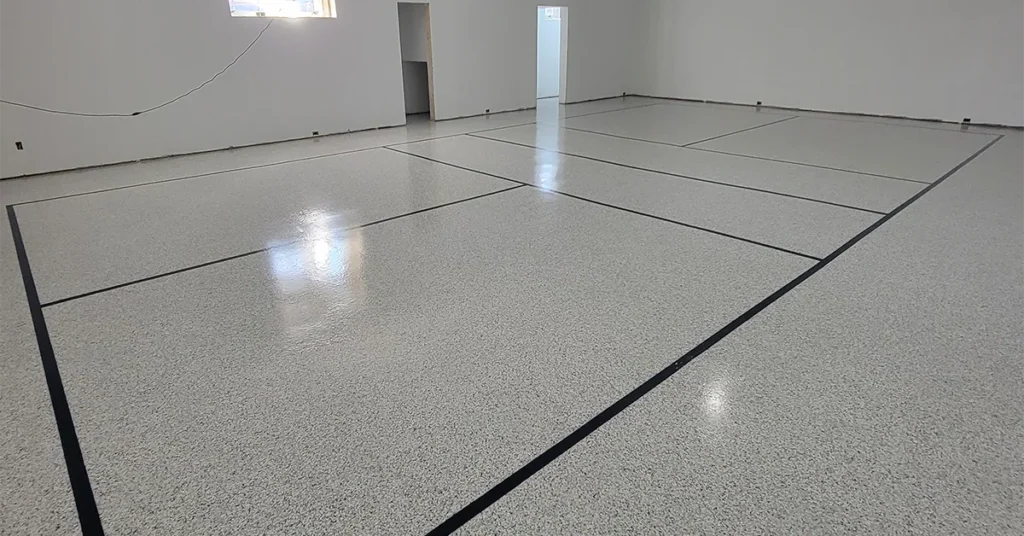Have you ever noticed a textured, multi colored, attractive, or durable floor in a garage or shop that looks almost too good to be true? Chances are, that’s epoxy flooring! If you’re curious about what epoxy flooring is and why it’s so popular, you’re in the right place. This guide will explain what makes epoxy flooring special, its benefits, where it works best, and how it’s installed. Let’s dive in and explore this versatile flooring option.
What Is Epoxy Flooring?
Epoxy flooring is a durable coating applied to floors, typically over concrete. It’s created by mixing resin and hardener to form a strong, durable surface that bonds tightly to the base. Unlike standard paint, epoxy is far tougher and can withstand heavy wear, spills, and even chemicals without damage.
Epoxy is loved for its long-lasting strength, easy maintenance, and customizable appearance. You can choose a simple, sleek finish or add decorative elements like colorful flakes for a unique look. Whether it’s for a home garage, a kitchen, or an industrial space, epoxy flooring is a practical and stylish choice.
Benefits of Epoxy Flooring
Why choose epoxy flooring over other options? Here are some of the top reasons it stands out.
- Exceptionally Durable: Epoxy is incredibly tough, making it ideal for spaces that see heavy use. It can handle the weight of vehicles, tools, or machinery without cracking or wearing down. With proper care, epoxy floors can last for years, saving you money on repairs or replacements.
- Easy to Maintain: Cleaning an epoxy floor is a breeze. Its smooth surface resists dirt, dust, and spills, so a quick sweep or mop is usually all it takes to keep it looking fresh. Unlike uncoated concrete, which absorbs stains, epoxy resists messes, making it great for busy spaces.
- Attractive Appearance: Epoxy floors have a glossy, polished look that instantly elevates any space. You can choose from a variety of colors and patterns or even add decorative flakes to match your style. Want a floor that mimics marble or has a modern vibe? Epoxy can deliver.
- Safe and Slip-Resistant: Epoxy can be customized with textures or additives to improve traction, reducing the risk of slips and falls. This makes it a smart choice for areas like bathrooms or workshops. Plus, its reflective surface brightens up spaces, improving visibility.
- Chemical-Resistant: Epoxy stands up to harsh substances like oil, gasoline, or cleaning chemicals, making it perfect for garages, factories, or labs where spills are common. It won’t stain or degrade, keeping your floor in top shape.
- Eco-Friendly Options Some epoxy products are formulated with low volatile organic compounds (VOCs), making them more environmentally friendly. Because epoxy lasts so long, it reduces the need for frequent replacements, which is good for both your wallet and the planet.
Where Can You Use Epoxy Flooring?
Epoxy’s versatility makes it suitable for a wide range of spaces. Here are some of the most common places where it shines.
- Garages: Garages floor are a popular spot for epoxy flooring because they endure heavy wear from vehicles, tools, and spills. Epoxy keeps the floor looking clean and polished while standing up to daily use.
- Kitchens: Epoxy is durable and easy to clean, making it a good choice for both home and commercial kitchens. It resists food spills, grease, and constant foot traffic while adding a sleek, modern look.
- Warehouses and Factories: Industrial spaces need floors that can handle heavy equipment and constant activity. Epoxy’s strength and slip-resistant options make it a safe, reliable choice for workers and machinery.
- Retail Stores and Showrooms: Epoxy’s attractive finish creates an inviting atmosphere in stores, making products stand out. It’s durable enough to handle high foot traffic and customizable to match any brand’s aesthetic.
- Basements: Basements often deal with moisture, but epoxy seals out water and transforms dull concrete into a stylish surface. Add decorative flakes, and your basement becomes a welcoming space for hobbies or relaxation.
- Schools and Hospitals: Epoxy is ideal for high-traffic, hygienic environments like classrooms or medical facilities. It’s easy to clean, resists germs, and withstands constant use.
How Is Epoxy Flooring Installed?
Installing epoxy flooring requires careful preparation and skill to ensure a flawless finish. Here’s a step-by-step look at the process.
Step 1 – Profile & Grind
Experts meticulously prep your floor using our commercial-grade, hardness-specific diamond grinders. Our vacuum systems minimize dust to maintain a clean working environment.
Step 2 – Repair & Prepare
Top contractors use 100% solids to patch any cracks, joints, or pitted areas of your concrete, creating a perfectly smooth surface for our basecoat application.
Step 3- Basecoat Application
Once your surface is fully prepped, an Industrial-Grade self-priming basecoat is applied, which completely soaks into and adheres to your concrete slab.
Step 4 Full Flake Broadcast
Flakes of your color choice are generously hand-broadcast for an even, colorful, and robust surface. The flakes are then rolled into the basecoat to ensure evenness and maximum adhesion.
Step 5- Excess Flake Removal
Once sufficiently cured, all loose and excess flakes are scraped away from your surface, followed by complete removal with commercial-grade blowers and vacuums.
Step 6-Topcoat Application
Once the above steps are complete, your coating is finalized by an even application of our 100% UV-stable, USA-Made, Industrial-Grade topcoat.
How to Maintain Your Epoxy Floor
Epoxy floors are low-maintenance, but a little care goes a long way. Follow these tips to keep your floor looking its best:
- Sweep Regularly: Remove dirt and dust to prevent scratches.
- Clean Spills Promptly: Wipe up spills with a damp cloth to avoid staining.
- Use Mild Cleaners: Stick to gentle soap and water for routine cleaning, avoiding harsh chemicals.
- Add Protective Mats: Placemats in high-traffic areas to reduce wear.
- Polish occasionally: Buff the floor with a soft cloth to maintain its shine.
Is Epoxy Flooring Right for You?
Epoxy flooring is an excellent choice if you want a durable, attractive, and low-maintenance floor. It’s perfect for busy homes, commercial spaces, or industrial areas that need to withstand heavy use while looking great. However, epoxy can be more expensive than some alternatives, and installation requires time and expertise. If you’re on a tight budget or need a quick solution, other options might be worth exploring.
FAQs
How long does epoxy flooring last?
With proper maintenance, epoxy floors can last 10 to 20 years or more, making them a long-term investment.
Can epoxy be applied over existing tiles?
Yes, but the tiles must be in good condition and properly prepared. A professional can ensure the surface is ready for epoxy.
Is epoxy flooring safe for homes with kids or pets?
Absolutely. Once cured, epoxy is non-toxic and can be made slip-resistant, making it safe for families.
How much does epoxy flooring cost?
Costs range per square foot, depending on the area, design, and preparation needed.
Can I install epoxy flooring myself?
DIY kits are available, but professional installation is recommended for the best results. Proper preparation and timing are crucial.
Does epoxy flooring scratch easily?
Epoxy with a top coat is highly scratch-resistant.
Conclusion
Epoxy flooring offers a winning combination of strength, style, and easy upkeep. From garages to kitchens to warehouses, it’s a versatile option that enhances any space. With countless design possibilities, epoxy lets you create a floor that reflects your taste while standing up to daily demands. If you’re ready to upgrade your floors, consider epoxy. It might just be the perfect fit for your home or business. Contact a professional to learn more about how epoxy can transform your space!


